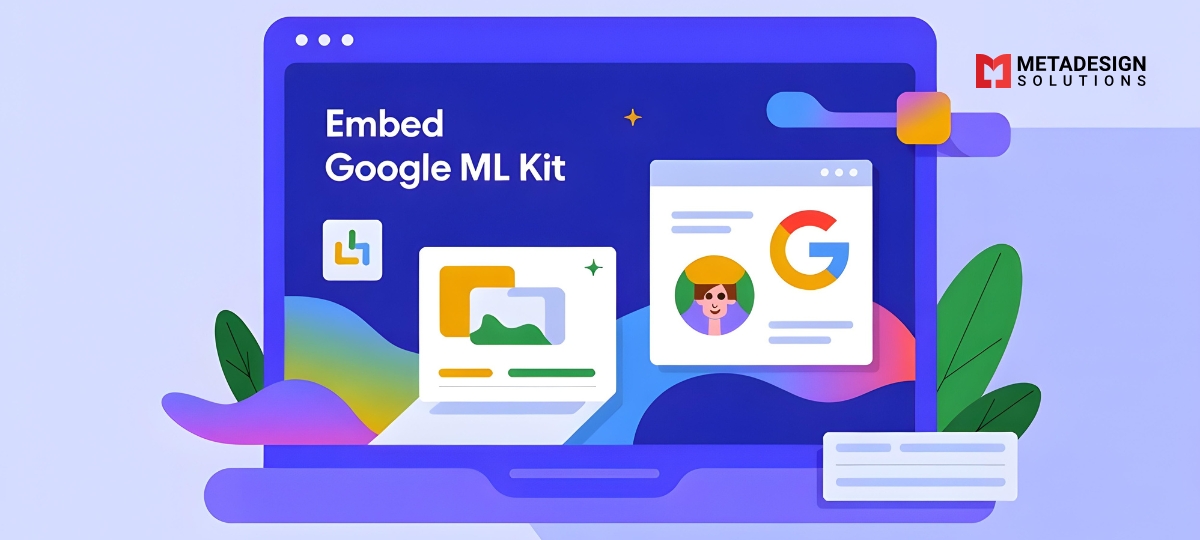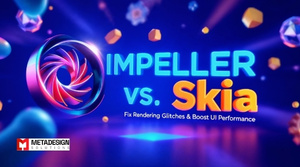Embedding Google ML Kit in Flutter: Real-Time On-Device AI Without Melting the Battery
The Challenge of Mobile AI
Real-time AI features like face detection, OCR, and object tracking are now standard in modern mobile apps. But building them with cloud-based inference leads to high latency, privacy concerns, and heavy battery drain.
Enter Google ML Kit: a suite of on-device machine learning APIs optimized for mobile apps. Paired with Flutter, ML Kit enables developers to embed real-time intelligence without compromising performance or power.
In this blog, we show how to seamlessly integrate ML Kit into your Flutter project while maintaining smooth UX and long battery life—a foundational capability for building intelligent, responsive apps powered by robust AI Agent Development Solutions.
What Is Google ML Kit?
Google ML Kit is a mobile SDK that provides ready-to-use ML models for Android and iOS. All models run on-device, eliminating the need for network connectivity.
Core Features:
- Text Recognition
- Face Detection
- Barcode Scanning
- Object Detection & Tracking
- Pose Detection
- Image Labeling
- Translation and Language ID
Bonus: ML Kit supports both Firebase-backed and standalone APIs, offering flexibility in how you deploy it.
Power Real-Time AI in Flutter, Battery-Friendly
Integrate Google ML Kit seamlessly with MetaDesign Solutions — delivering intelligent apps through efficient, real-time AI.
Why ML Kit Is Ideal for Battery-Conscious Apps
1. No Cloud Roundtrips
- All processing is done locally.
- Reduces energy usage from cellular or Wi-Fi radios.
2. Hardware Acceleration Support
- Leverages Android NNAPI and Core ML on iOS.
- Efficient CPU and GPU usage.
3. Optimized Models
- All models are size-optimized (<10MB)
- Executed with a fixed memory footprint
Integrating ML Kit in a Flutter Project
Step 1: Add Required Dependencies
Add the google_ml_kit package:
dependencies:
google_ml_kit: ^0.15.0
Step 2: Platform-Specific Setup
- iOS: Add permissions for camera/microphone and enable MLKit via Info.plist
- Android: Add camera, INTERNET, and VIBRATE permissions
Use Case: Real-Time Text Recognition (OCR)
Code Example:
final textDetector = GoogleMlKit.vision.textRecognizer();
final inputImage = InputImage.fromFilePath(filePath);
final RecognizedText text = await textDetector.processImage(inputImage);
print(text.text);
Use InputImage.fromCameraImage() for real-time capture via camera plugin
Battery Optimization Tips:
- Limit frame capture rate
- Pause detection on inactivity
- Throttle detection loop to 15–30 FPS
Use Case: Face Detection with Flutter Camera
Key Features:
- Bounding box + facial landmarks
- Smiling probability + eye openness
- Head rotation estimation
Integration Flow:
- Use camera package for real-time frames
- Convert to InputImage
- Pass to faceDetector.processImage()
Code Snippet:
final faceDetector = GoogleMlKit.vision.faceDetector();
final List<Face> faces = await faceDetector.processImage(image);
ML Kit vs TensorFlow Lite: What to Choose?
| Feature | ML Kit | TensorFlow Lite |
| Ease of Use | High (plug-and-play) | Medium (manual model deployment) |
| Real-Time APIs | Prebuilt (text, face, pose) | Custom models only |
| Platform Channels | Minimal | Required for custom logic |
| Battery Efficiency | Very high | Depends on model |
| Flexibility | Limited | High |
Performance Benchmarks (2025 Devices)
| Device | Use Case | Battery Drop (15 min) | Avg FPS |
| iPhone 15 | Face Detection | 3% | 29.7 |
| Pixel 9 | Text Recognition | 2.5% | 30.0 |
| Galaxy S24 | Barcode Scan | 1.9% | 28.5 |
Best Practices for Battery-Friendly Real-Time AI
- Limit detection frequency based on UI focus
- Reuse ML model instances
- Defer processing on background threads
- Trigger on demand, not always-on loops
- Use platform hardware acceleration defaults
Advanced Tips for Production Apps
- Log ML model inference times
- Detect slow hardware and fall back to basic UX
- Use Isolate for decoupled ML tasks
- Handle permission gracefully across OS updates
- Allow toggling ML features in user settings
Why Choose MetaDesign Solutions?
At MDS, we build ML-powered mobile apps with:- Flutter + ML Kit performance optimization
- Custom AI workflows with Firebase or TensorFlow Lite
- Native + Dart interoperability for advanced use cases
- Rigorous QA and battery profiling on physical devices
Final Thoughts: Smart AI, Smart Battery
You don’t have to choose between intelligence and efficiency. Google ML Kit + Flutter gives you the power to embed real-time AI while keeping apps responsive and battery-smart.Ready to integrate smart AI into your app?Book a consultation with our Flutter + AI experts today.Related Hashtags:
#Flutter #MLKit #OnDeviceAI #GoogleMLKit #MobileAI #FlutterDevelopment #RealTimeAI #BatteryEfficientAI #MLKitFlutter #AIIntegration #MetaDesignSolutions #MobileMachineLearning #FlutterAI



